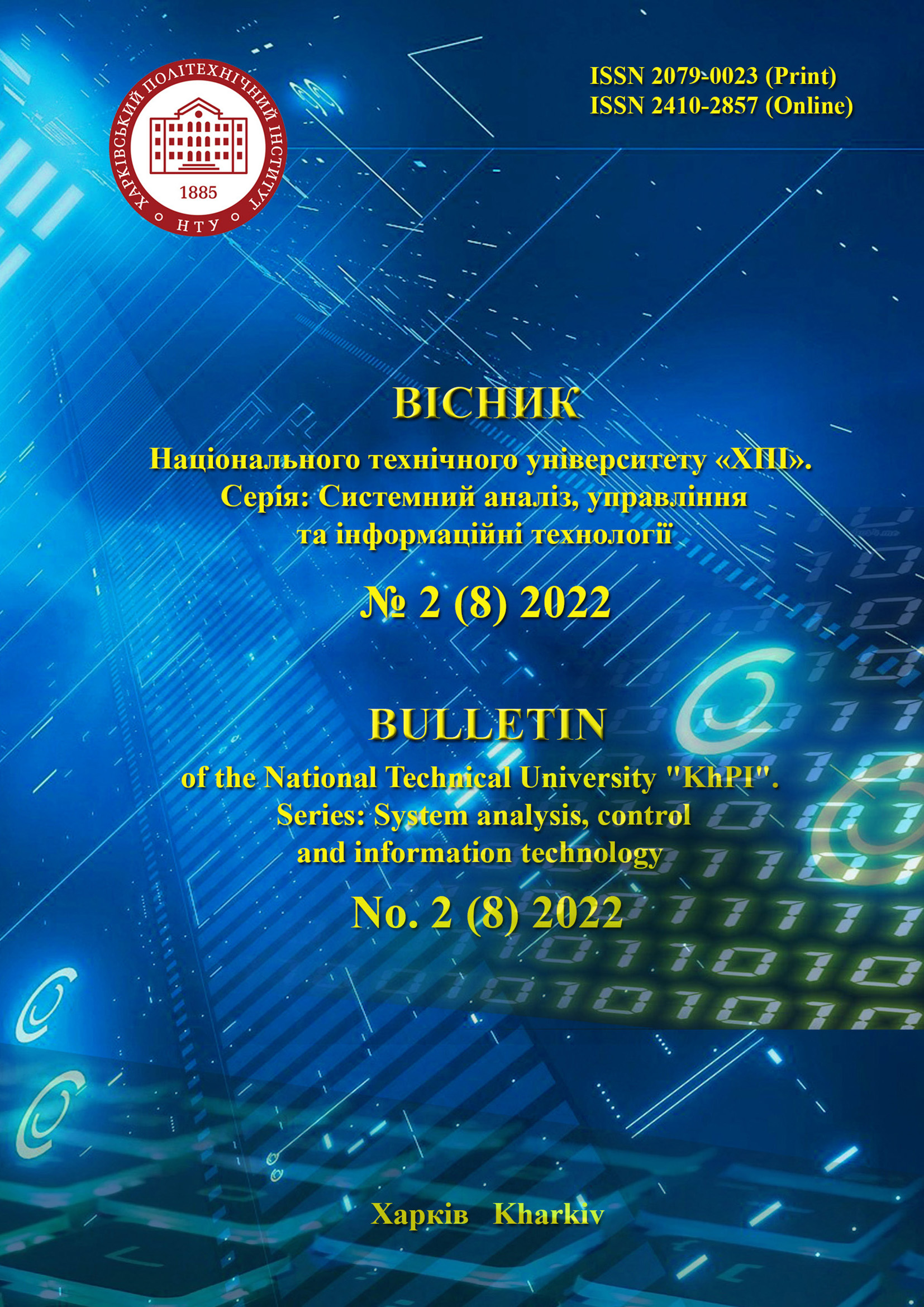FAILURE RATE REGRESSION MODEL BUILDING FROM AGGREGATED DATA USING KERNELBASED MACHINE LEARNING METHODS
DOI:
https://doi.org/10.20998/2079-0023.2022.02.08Keywords:
dependability, factor analysis, failure rate, kernel methods, machine learning, production processes, preventive maintaince, ridge regression, regression modelAbstract
The problem of regression model building of equipment failure rate using datasets containing information on number of failures of recoverable systems and measurements of technological and operational factors affecting the reliability of production system is considered. This problem is important for choosing optimal strategy for preventive maintenance and restoration of elements of process equipment, which, in turn, significantly affects the efficiency of production management system. From a practical point of view, of greatest interest is the development of methods for regression models building to assess the impact of various technological and operational factors controlled during system operation on failure rate. The usual approach to regression models construction involves preselecting the model structure in the form of a parameterized functional relationship between failure rate and affecting technological variables followed by statistical estimation of unknown model parameters or training the model on datasets of measured covariates and failures.The main problem lies precisely in the choice of model structure, the complexity of which should correspond to amount of data available for training model, which in the problem of failure rate modeling is greatly complicated by lack of a priori information about its dependence on affecting variables. In this work, such a problem is solved using machine learning methods, namely, kernel ridge regression, which makes it possible to effectively approximate complex nonlinear dependences of equipment failure rate on technological factors, while there is no need to pre-select the model structure. Preliminary aggregation of data by combination of factor and cluster analysis can significantly simplify model structure. The proposed technique is illustrated by solving a practical problem of failure rate model building for semiconductor production equipment based on real data.
References
Boardman N., Hu W., Mishra R. Optimal Maintenance Design for a Simple Reparable System. Proceedings of the 58th IEEE Conference on Decision and Control. 2019, pp. 3098–3103.
Wang J., Yin H. Failure Rate Prediction Model of Substation Equipment Based on Weibull Distribution and Time Series Analysis. IEEE Access. 2019, vol. 7, pp. 298–309.
Jones H. A Method and Model to Predict Initial Failure Rates. Annual Reliability and Maintainability Symposium. 2020, pp. 1–6.
Yastrebeneckij M. A., Solyanik B.A. Opredelenie nadezhnosti apparatury promyshlennoj avtomatiki v usloviyah ekspluatacii [Determination of the reliability of industrial automation equipment in operating conditions]. Moscow, Energiya, 1968. 128 p.
Jürgensen J. Individual Failure Rate Modelling and Exploratory Failure Data Analysis for Power System Components. Doctoral Thesis. Stockholm, KTH, 2018. 79 p.
Jürgensen J., Nordström L., Hilber P. Estimation of Individual Failure Rates for Power System Components Based on Risk Functions. IEEE Trans. on Power Delivery. 2019, vol. 34, no. 4, pp. 1599–1607.
Susto G., Schirru A., Pampuri S., McLoone S., Beghi A. Machine Learning for Predictive Maintenance. IEEE Transactions Industrial Information. 2015, vol. 11, pp. 812–820.
Scholkopf B., Smola A. Learning with Kernels. Cambridge, MA, MIT Press. 2002. 640 p.
Guo X., Uehara K. Graph-based Semi-Supervised Regression and Its Extensions. International Journal of Advanced Computer Science and Applications. 2015, vol. 6, no. 6, pp. 260–269.
Pozdnoukhov A., Bengio S. Semi-supervised kernel methods for regression estimation. Proc. of IEEE International Conference on Acoustics, Speech and Signal Processing. 2006, pp. 577–580.
Sindhwani V., Niyogi P., Belkin M. Beyond the Point Cloud: from Transductive to Semi-supervised Learning. Proc. of the 22nd international conference on Machine learning. 2005, pp. 824–831.
McCann M., Johnston A. SECOM Data Set 2008. Available at: https://archive.ics.uci.edu/ml/datasets/secom (accessed 20.08.2021).
Downloads
Published
How to Cite
Issue
Section
License
LicenseAuthors who publish with this journal agree to the following terms:
- Authors retain copyright and grant the journal right of first publication with the work simultaneously licensed under a Creative Commons Attribution License that allows others to share the work with an acknowledgement of the work's authorship and initial publication in this journal.
- Authors are able to enter into separate, additional contractual arrangements for the non-exclusive distribution of the journal's published version of the work (e.g., post it to an institutional repository or publish it in a book), with an acknowledgement of its initial publication in this journal.
- Authors are permitted and encouraged to post their work online (e.g., in institutional repositories or on their website) prior to and during the submission process, as it can lead to productive exchanges, as well as earlier and greater citation of published work (See The Effect of Open Access).


